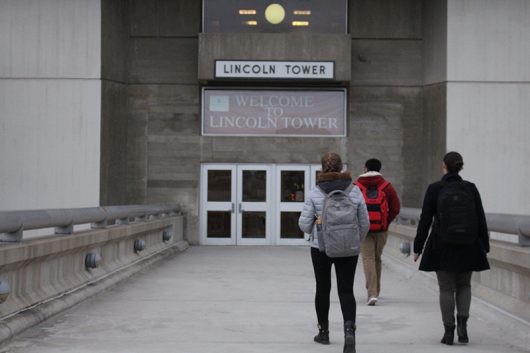
Ohio State’s Counseling and Consultation Service opened a new office in Lincoln Tower after adding 12 new consumers during Fall Semester. Credit: Sara Stacy | Senior Lantern reporter
Students looking to receive individual counseling sessions from Ohio State’s Counseling and Consultation Service, 10 of which are included in student fees, might have to wait up to six weeks for an appointment, according to Undergraduate Student Government.
CCS expanded last semester by adding a new office in Lincoln Tower and hiring 12 new counselors, but they are still facing a high demand for counseling services.
“We don’t want anyone waiting weeks and weeks, so what we look at is what the need is and matching that with the appropriate resource,” said Micky Sharma, director of counseling and consultation services. “We have connections with other mental health providers both on and off campus.”
In the fall of 2016, the percentage of students in individual therapy sessions had increased by 43 percent from the previous year, said Sharma.
Tony Buss, fourth-year in English and the diversity and inclusion director for Undergraduate Student Government, said his work with mental-health advocacy through USG has shown him the struggles many students on campus face accessing mental health care.
“A lot of students are having issues with mental health, especially with anxiety and depression,” he said. “They’re needing a little bit more immediate care than that 10 sessions can allow, or having to be deferred off campus, because there are so many students in need but unfortunately not enough counselors to accommodate that.”
CCS also offers group therapy, drop-in workshops that focus on topics like anxiety and perfectionism, an after-hours hotline for students who might be struggling with a crisis outside of business hours and same-day appointments for students in a crisis.
“One of the things we’ve tried to do is increase the access,” Sharma said. “If you think about the Columbus campus, and over 59,000 students, they don’t all need individual therapy, which is why we’ve evolved to offering a menu of mental health-service options.”
Sharma said group-therapy sessions might actually be the best option for students suffering from anxiety, which is the number one issue CCS sees students struggling with.
“The treatment of choice for anxiety is group counseling, it’s proven to be very effective,” Sharma said. “The trick, at times, can be that if I’m an anxious person, I might not want to be in a group, so we work with students to get them to a place where they’re comfortable.”
Anxiety surpassed depression as the most common mental health concern not only on Ohio State’s campus but across the country the past several years, said Sharma.
Last semester, USG passed a resolution encouraging all academic departments to include a mental-health statement on course syllabi, which Buss said he hoped would change the culture around mental health.
Buss said it’s possible the demand for counseling services isn’t necessarily because more students are suffering from mental-health issues, but because the stigma around mental health has been reduced.
“From a student’s perspective, I think it’s not that students from four or five years ago weren’t dealing with some of the same things that we are today, I just think there’s less and less of a stigma,” he said. “Which is a good thing, in a way, because more students are reaching out to get help, but on the reverse side of that it means the system is getting bogged down because so many students need care.”


